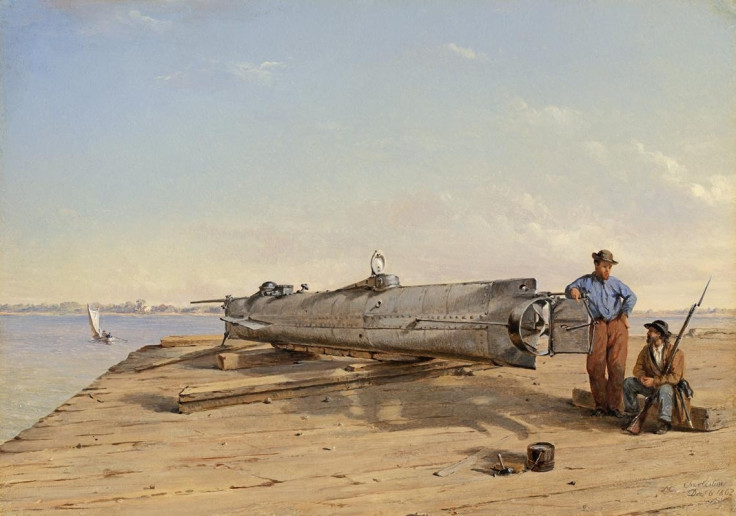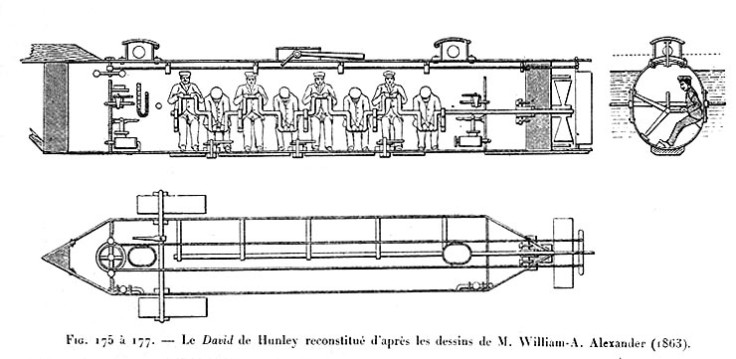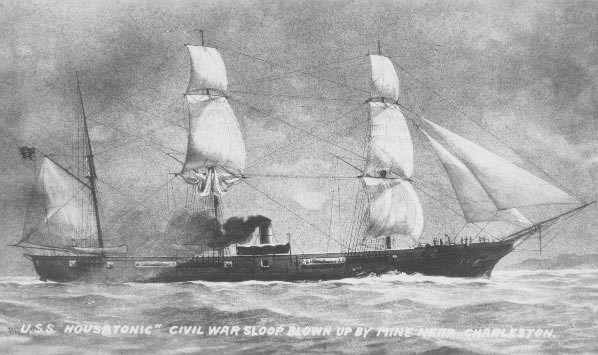American Civil War: Mystery deaths of submarine H. L. Hunley crew finally solved after 150 years
The Confederate submarine crew died instantly - but their bodies showed no mark of injury or struggle.

A full 22 years after their bodies were discovered, scientists have come up with an explanation for the mysterious deaths of the crew of the Civil War submarine the H. L. Hunley 150 years ago.
The Confederate crew of eight were found seated in their stations on the hand crank that powered the ship. They showed no sign of struggle or trying to escape. They also displayed no sign of physical injury. The bilge pumps hadn't been used and they hadn't tried to escape through the air hatches.
The submarine was only discovered in 1995, found lying about 300 metres from where the Housatonic came to rest. It was retrieved from the seafloor in 2000. For decades, no one has had any idea how the crew died. But researchers at Duke University now say that the crew were killed instantly from the force of a torpedo blast, publishing their findings according to research published in the journal PLOS ONE.
"The disappearance of the Hunley has long stood as one of the great mysteries of American history," said study author Rachel Lance of Duke University in the US. "Finding the cause of death of the crew has finally allowed us to declare the mystery solved."
When the submarine was opened up, the bodies of the eight men were discovered in their puzzling apparent peace. Scientists now believe that they died on 17 February 1864, the instant they rammed a torpedo into the hull of the Union ship Housatonic, using a total of 61kg of black powder.
The torpedo itself wasn't fired through the water, as with modern submarines, but was instead held on a long pole that collided with the hull of the enemy ship. On impact, the torpedo exploded.
The 1,200-tonne ship sank within 5 minutes, but the blast also instantly killed the crew of the submarine. Their deaths were so swift they didn't even have time to move from their stations on the crank.

"All the physical evidence points to the crew taking absolutely no action in response to a flood or loss of air."
Lance built a scale model of the submarine and recreated the fatal black powder explosion. They rammed an explosive at an iron sheet to work out the blast energy the crew would have been exposed to.
An internal pressure gauge measured a powerful shockwave in the model submarine. The force of the explosion travelling through the crew's lungs and brains was brutal. The furthest a crew member was from the blast was just 42 feet (13 metres). This gave them an 85% chance of dying instantly, the researchers calculated.
"This is the characteristic trauma of blast victims, they call it 'blast lung,'" said Lance.
"You have an instant fatality that leaves no marks on the skeletal remains. Unfortunately, the soft tissues that would show us what happened have decomposed in the past hundred years."

© Copyright IBTimes 2025. All rights reserved.




















